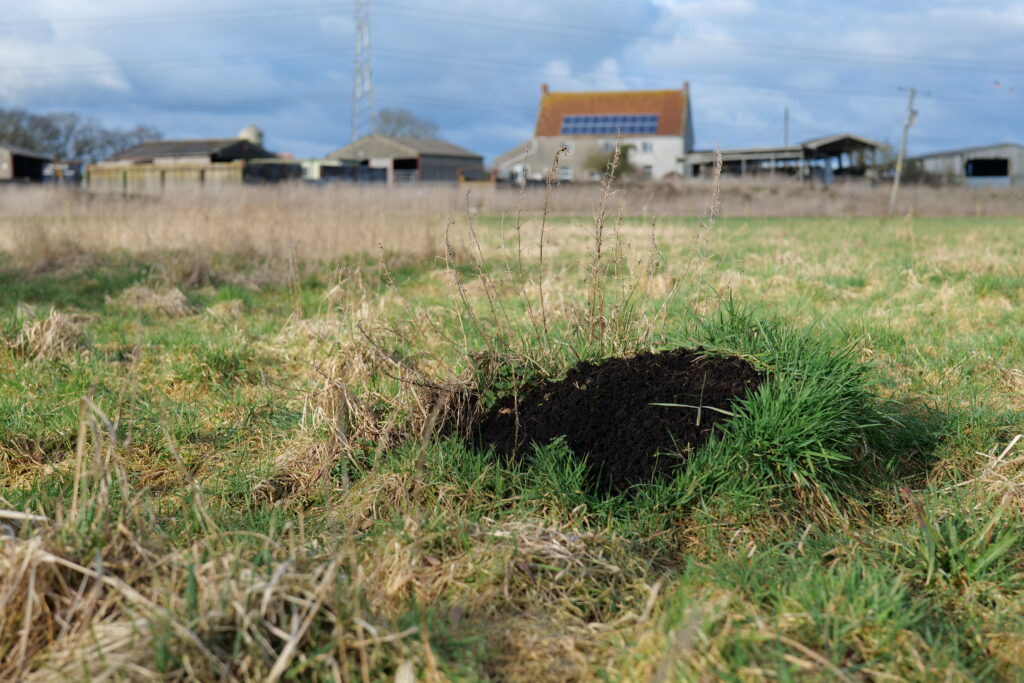Honeygar Farm, a Wilder Carbon case study
Contact
“Somerset Wildlife Trust is really proud to be a trusted deliverer with Wilder Carbon. Being a Trusted Deliverer means that we have the assurance we’re working to high standards through the standards board and that our project has been checked and verified independently to make sure that we’re going to deliver those carbon benefits and biodiversity gains.”
Georgia Stokes, CEO, Somerset Wildlife Trust

Honeygar farm is an 80-hectare former intensive dairy farm on the Somerset levels which was purchased by the Somerset Wildlife Trust in January 2021.
Situated on lowland peat, the site was largely drained in the past to increase the yield of dairy cattle. In its current form, the site is a net emitter of carbon emissions, estimated at 1,642 tonnes of CO2 per year, as carbon seeps out of the dried peat.
Now the site is being ‘re-wetted’ to restore valuable habitat for native species. Lowland peat can be one of the most carbon rich habitats known and so the site has potential, not just to reduce its emissions, but to one day sequester vast amounts of CO2 into the soil.
A restored Honeygar is strategically situated between several other wildlife reserves and will act as a corridor for flora and fauna, improving habitat connectivity. The project is a test case for the Wilder Carbon standard for carbon credits.
Incubated by the Kent Wildlife Trust, Wilder Carbon is a company which providing the UK’s only ‘conservation grade’ carbon units, owing to their commitment to sequestering carbon through the creation or restoration of high-quality native habitat. Wilder Carbon projects leverage finance only from the carbon benefit of delivering UK nature restoration, which is then sold to UK business who are demonstrably reducing their own emissions. Wilder Carbon projects are required to demonstrate a biodiversity uplift, and Wilder Carbon will be looking at how they can explicitly bundle these additional benefits in line with emerging biodiversity and nature impact frameworks for meaningful climate impact claims.
Wilder Carbon Units are sold on the ‘voluntary market’). To qualify for purchasing these units, buyers must be also demonstrably reducing their own emissions, avoiding greenwashing and ensuring emissions are also reduced at source. Wilder Carbon also takes a conservative approach to carbon emissions estimating, purposefully underestimating the capacity of sites to absorb carbon so that the process remains defensible and replicable.
This project will provide an opportunity to record, investigate and understand in detail the relationship between wilding ecosystems and carbon capture for lowland peat and forge partnerships to stimulate a new economic model for the Somerset Levels that puts nature-based solutions at its heart.
To find out more, visit Wilder Carbon’s website.
Revenue Model
Sale of (nature-based) carbon credits. Note that these Wilder Carbon Units are not bundled with other environmental credits. Wilder Carbon are looking at how they bundle additional benefits with the emerging biodiversity and nature impact frameworks.
Public/Grant Funding
£100,000 grant funding of Wilder Carbon testcase through the Environment Agency’s NEIRF (Natural Environment Investment Readiness Fund). Note that this was granted specifically for the development of the Wilder Carbon Standard and was not received specifically by the Honeygar project.
Legal Arrangements
The farm site was purchased by the Somerset Wildlife Trust in January 2021.
Parties Involved
Somerset Wildlife Trust – ‘Trusted deliverer’ undertaking conservation and restoration work. Wilder Carbon – supplier and broker of conservation-grade carbon units from site for sale on the voluntary carbon market. Soil Association (Certifier of carbon accreditation)
Environmental Improvement
Re-wetting and restoration of lowland peat in the Avalon Marshes, an internationally important area of wetland. This will provide habitats for a range of rare and vulnerable flora and fauna, such as the illusive bittern, and connect other fragments of wetland.
Restoration of natural wetland will also likely result in improvements to water quality downstream of it, through the removal of phosphate and nitrate pollution and will act as a natural water buffer, reducing flooding risk locally.
Social Impact and Engagement
Retention of some limited grazing to maintain pasture habitat through lease of land to neighbouring dairy farmer.
Register your project for the 2024 Nature Finance Review
"*" indicates required fields
Out of date? Contact us at info@ecosystemsknowledge.net